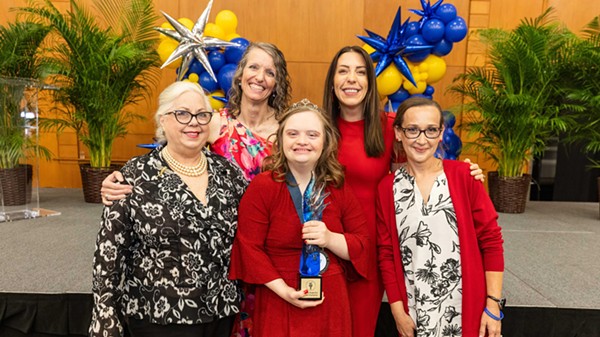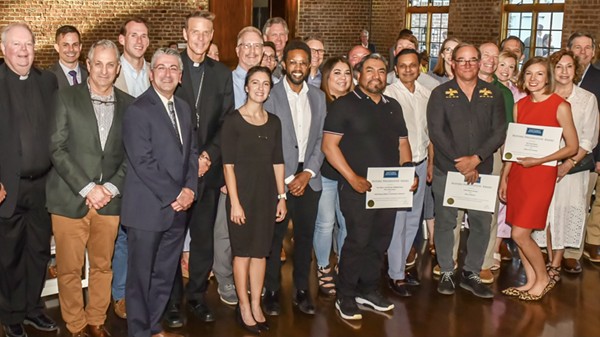What could be more maligned these days than public school lunches?
Between Congress’ nod to pizza as a vegetable last fall and the current uproar over the notorious, ammonia–laced “pink slime” the USDA wants to pass off as meat, school lunch has a worse reputation than Lindsay Lohan’s plastic surgeon.
But isn’t this the way it’s always been?
I seem to remember one of the most popular topics of conversation in my junior high school cafeteria, right behind the merits of plastic banana clips, was whether the Salisbury steak was made up of horse or dog. We subsisted on tater tots and Little Debbie’s snackcakes. It didn’t matter if your mama offered to send you with a nice turkey sandwich and an apple; it was social suicide to “brown–bag” it.
Twelve years of public school lunches probably have something to do with why I spend a chunk of the morning packing my kids’ lunches when I would rather be drinking another cup of tea and having a staring contest with the dog. If bringing your own is still the epitome of nerdiness, I haven’t heard about it yet.
After eating my way through last week’s Mini–Food Show hosted by the Savannah–Chatham County School System, however, I’m wondering if school lunch hasn’t gotten a worse rap than it deserves, in spite of the bad press and unsavory memories.
School Nutrition Program Director Altheria Maynard explained that SCCPSS has implemented plenty of palatable changes under the USDA’s stringent new guidelines, designed to reduce fats and increase whole grains, fruits and vegetables. Haters might be surprised to know that our district has led the way among Georgia schools.
“We’ve served only whole wheat pasta and brown rice for going on four years now, and we were the first to introduce Meatless Mondays,” said Maynard, who will retire in May after holding her position for 29 years. She doesn’t mind being called the Head Lunch Lady. “We take nutrition very, very seriously.”
Delectable aromas wafted out of the Jenkins High cafeteria as food vendors offered up an impressive array of tasty samples to hungry students whose opinions will determine what will be on the menu next year: Nitrate–free chicken strips, whole grain waffles, fresh–sliced melon, 100% juices with no added sugar. I devoured second helpings of vegetarian chili with soy crumbles and pineapple–topped sweet potatoes. If weren’t for the hairnets, it could have been an upscale restaurant.
The dominant corporate presence wasn’t exactly thrilling—national brands like Hormel, Smuckers and Campbell’s—nor am I a fan of food encased in packaging. But Maynard schooled the food snob in me by pointing out that these name brands are what kids are used to eating.
“We want the children to eat healthy, but our competition is the fast food industry,” she sighed with resignation. “They’re more likely to accept healthier options when they come from brands they recognize.”
Almost 63 percent of Savannah–Chatham County Public School students receive reduced or free lunches, and Maynard laments that many come from single–parent homes where no one has time or inclination to shop and cook. In America, we have an entire generation of palates raised in the drive–thru.
Maynard says the district has sourced vegetables locally when possible and that she would love to implement more of what she calls “scratch cooking.” But even if the kids would eat it, the lack of a centralized kitchen prevents any complex culinary creativity.
“I had hoped we’d have that kitchen by the time I retired, but there’s no funding for it,” she said ruefully.
There’s no doubt that fresh, healthy school lunches are part of the larger socioeconomic and political issues surrounding food in this country. It’s a truth Maynard recognizes while she and her staff do the best they can with the budget and facilities they have to feed 10,000 kids a day.
“We have a monumental task here,” she said. “It’s going to take a revolution for things to change.”
In the meantime, there’s progress.
And then there’s not. What about that horrific “pink slime” that the USDA generously calls “Lean Finely Textured Beef” and probably has Upton Sinclair doing the Watusi in his grave right now?
After a national uproar and a Change.org petition that garnered almost a quarter of million signatures, the USDA announced Thursday that it will give school districts the choice on whether they want to buy meat with LFTB. However, since it also doesn’t require any labeling, it’s fairly impossible to tell whether it’s there or not. As to whether the meat served at a school near you will contain LFTB, the answer is: Probably.
In the face of tremendous negative blowback, SCCPSS school nutrition coordinator Rhonda Barlow issued this statement in response to the USDA’s shuck–and–jive:
“We cannot confirm or disconfirm if we serve products that contain [LFTB] because of the vague response from our supplier, the USDA.”
She and other school nutrtionists find the labeling issue egregious, but also point out that the problem of pink slime oozes far beyond the cafeteria: According to the USDA, approximately 70 percent of all the ground beef sold in this country already contains LFTB, including what’s available at grocery stores and restaurants.
That means if you eat any meat other than what you’ve killed yourself, you’ve already consumed pink slime. I’m not a vegetarian, but man, I’m getting close. When will we be grossed out enough to forge that food revolution?
Speaking of reform, my adversity to school lunch has only made it all the more attractive to my children. (You can imagine how exotic chicken tetrazzini sounds when it’s forbidden.)
A look at this month’s menu reveals that on some days, I’d be hard–pressed to pack them anything healthier or tastier.
But yes oh yes, we will be skipping Salisbury steak day.


























